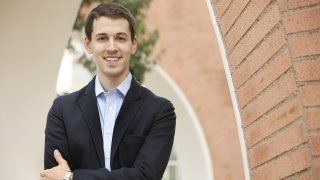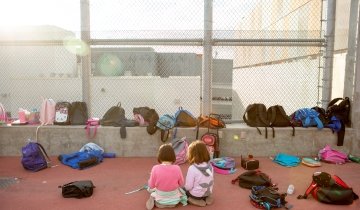What are children being taught in math classes today?
According to a new paper by USC Rossier School of Education assistant professor Morgan Polikoff, the answer is a whole lot of what they were taught last year.
Polikoff said a longtime criticism of mathematics curriculum has been that it is extremely broad and shallow, like the Missouri River: “a mile wide and an inch deep.”
By contrast, Polikoff said, in high-achieving countries like Japan, students are taught a topic in great depth and then move on to an entirely new one. For example, Japanese students learn fractions for two to three years while American students are taught fractions piecemeal for up to six years with a lot of duplication.
Earlier studies, however, were conducted prior to the No Child Left Behind Act of 2001, which requires states to implement their own curriculum standards.
Polikoff wanted to find out if redundancy in math instruction was still high and if there was any relationship between repetition by teachers and state standards.
In his paper, currently under review by The Elementary School Journal, Polikoff investigated how much repetition exists in K-8 math instruction.
He looked at 183 specific math topics taught by 7,000 teachers in 27 states. His findings revealed that 70 to 80 percent of instructional time in grades 3 through middle school was a repeat of the previous grade, with only 20 to 30 percent devoted to new topics. Repetition was lower in early grades.
Though state standards often are as repetitive as instruction, there was no correlation between the redundancy of instruction and the redundancy of state standards, Polikoff said. In addition, the Common Core Standards, which have been adopted by 45 states, had even more redundancy in early grades than existing state standards but much less repetition in middle school. Polikoff found the lowest redundancy – 17 percent – in Common Core Standards for math between the seventh and eighth grades.
So why are teachers in different grades reviewing the same thing over and over?
“Math teachers in the U.S. are fine adding topics to curriculum, but they’re reluctant to take topics out because it violates their norms,” Polikoff said. “There’s also a push to cover everything because of testing. They need more than a set of standards, and they don’t have the support to fundamentally change their instruction.”
One of the biggest problems, he said, is that textbooks tend to cover everything so that they can be sold to states with different standards. New textbooks that are structured sequentially and cover fewer topics in greater depth would make a difference, he noted.
“Another problem is that a lot of students are not getting it the first time,” Polikoff said. “I’m a believer in good curriculum materials and training teachers to teach skills the right way so students will not lose those skills right away.”
Along with new textbooks and aligned materials, he said teachers need professional development and support. One model might be Japan’s “lesson studies” in which teachers observe one another, collaborate and share best practices for teaching a particular skill.
“Teachers need that support if we’re going to see this problem go away,” he said.
Polikoff currently is working on a sub-study for the Measures of Effective Teaching project at the Bill & Melinda Gates Foundation.
He examines data to explore the connections among student achievement, teaching quality and instructional alignment with standards and assessments to determine what matters more for raising achievement – content or quality.
This article was featured in the October, 2011 Issue of Rossier Reach
View Past Issues of Rossier Reach



